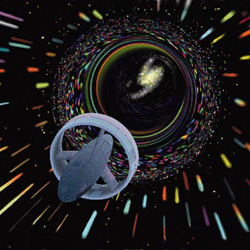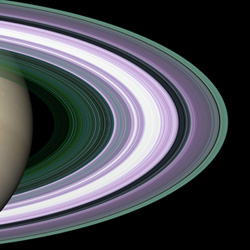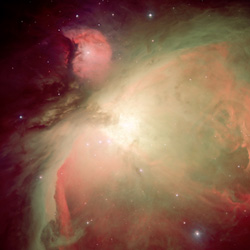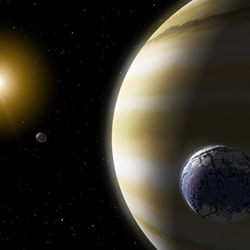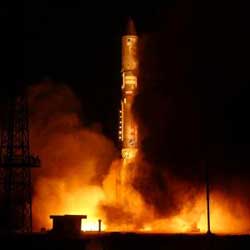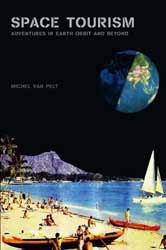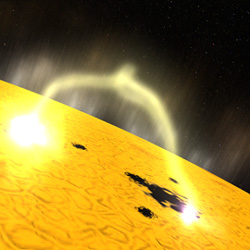
Artist illustration of magnetic lines stretching and twisting around sunspots. Image credit: NASA. Click to enlarge.
The most intense burst of solar radiation in five decades accompanied a large solar flare on January 20. It shook space weather theory and highlighted the need for new forecasting techniques, according to several presentations at the American Geophysical Union (AGU) meeting this week in New Orleans.
The solar flare, which occurred at 2 a.m. EST, tripped radiation monitors all over the planet and scrambled detectors on spacecraft. The shower of energetic protons came minutes after the first sign of the flare. This flare was an extreme example of the type of radiation storm that arrives too quickly to warn interplanetary astronauts.
“This flare produced the largest solar radiation signal on the ground in nearly 50 years,” said Dr. Richard Mewaldt of the California Institute of Technology, Pasadena, Calif. He is a co-investigator on NASA’s Advanced Composition Explorer (ACE) spacecraft. “But we were really surprised when we saw how fast the particles reached their peak intensity and arrived at Earth.”
Normally it takes two or more hours for a dangerous proton shower to reach maximum intensity at Earth after a solar flare. The particles from the January 20 flare peaked about 15 minutes after the first sign.
“That’s important because it’s too fast to respond with much warning to astronauts or spacecraft that might be outside Earth’s protective magnetosphere,” Mewaldt said. “In addition to monitoring the sun, we need to develop the ability to predict flares in advance if we are going to send humans to explore our solar system.”
The event shakes the theory about the origin of proton storms at Earth. “Since about 1990, we’ve believed proton storms at Earth are caused by shock waves in the inner solar system as coronal mass ejections plow through interplanetary space,” said Professor Robert Lin of the University of California at Berkeley. He is principal investigator for the Reuven Ramaty High Energy Solar Spectroscopic Imager (RHESSI). “But the protons from this event may have come from the sun itself, which is very confusing.”
The origin of the protons is imprinted in their energy spectrum, as measured by ACE and other spacecraft, which matches the energy spectrum of gamma-rays thrown off by the flare, as measured by RHESSI. “This is surprising because in the past we believed the protons making gamma-rays at the flare were produced locally and the ones at the Earth were produced instead by shock acceleration in interplanetary space,” Lin said. “The similarity of the spectra suggests they are the same.”
Solar flares and coronal mass ejections (CMEs), associated giant clouds of plasma in space, are the largest explosions in the solar system. They are caused by the buildup and sudden release of magnetic stress in the solar atmosphere above the giant magnetic poles we see as sunspots. The Transitional Region and Coronal Explorer (TRACE) and the Solar and Heliospheric Observatory (SOHO) spacecraft are devoted to observing the sun and identifying the root causes of flares and CMEs, with an eye toward forecasting them.
“We do not know how to predict the flow of energy into and through these large flares”, said Dr. Richard Nightingale of the Lockheed Martin Solar and Astrophysics Laboratory in Palo Alta, Calif. “Instruments like TRACE give us new clues with each event we observe.”
TRACE has identified a possible source of the magnetic stress that causes solar flares. The sunspots that give off the very largest (X-class) flares appear to rotate in the days around the flare. “This rotation stretches and twists the magnetic field lines over the sunspots”, Nightingale said. “We have seen it before virtually every X-flare that TRACE has observed since it was launched and more than half of all flares in that time.”
However, rotating sunspots are not the whole story. The unique flare came at the end of a string of five other very large flares from the same sunspot group, and no one knows why this one produced more sudden high energy particles than the first four.
“It means we really don’t understand how the sun works,” Lin said. “We need to continue to operate and exploit our fleet of solar-observing spacecraft to identify how it works.”
Original Source: NASA News Release

